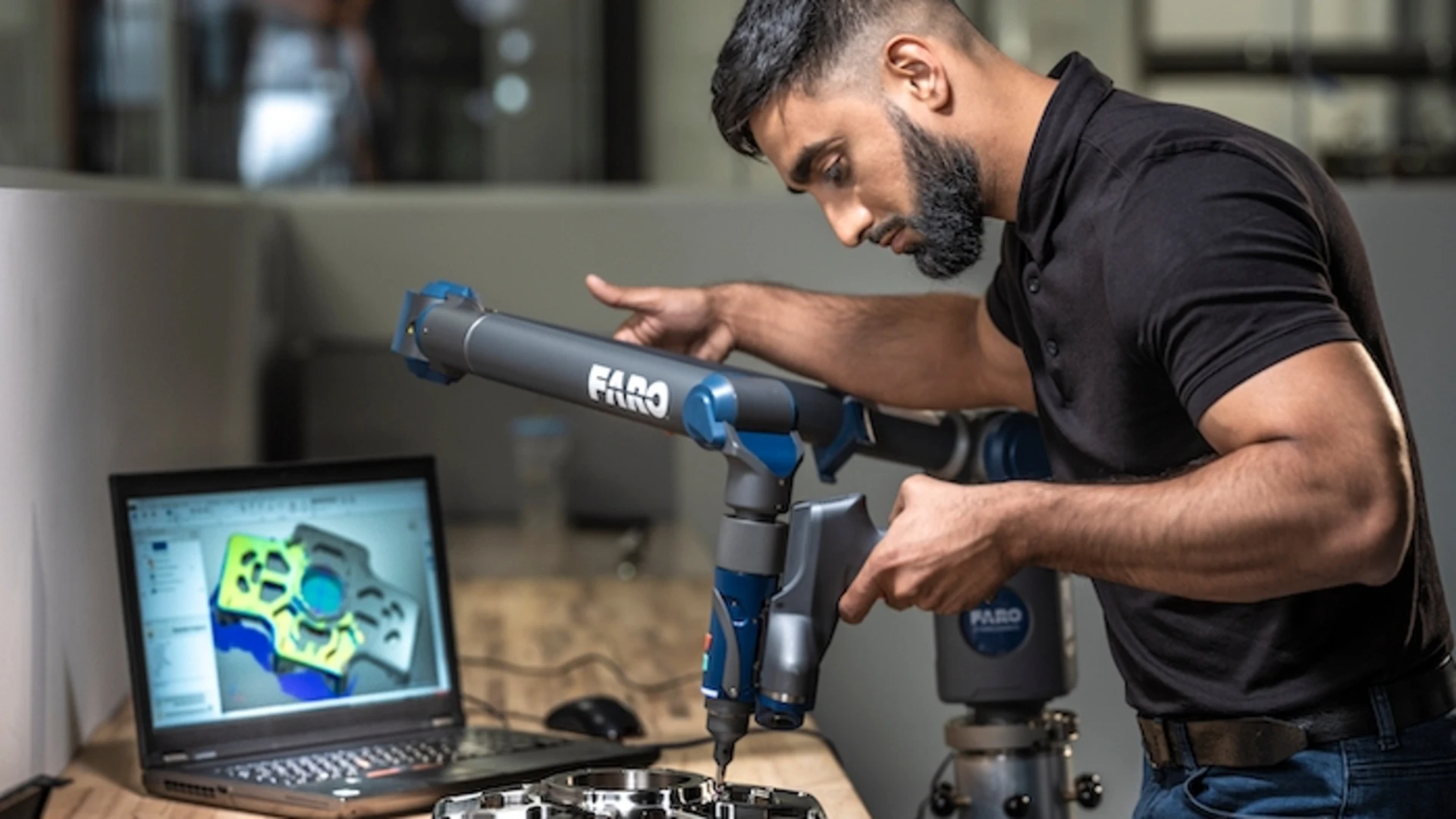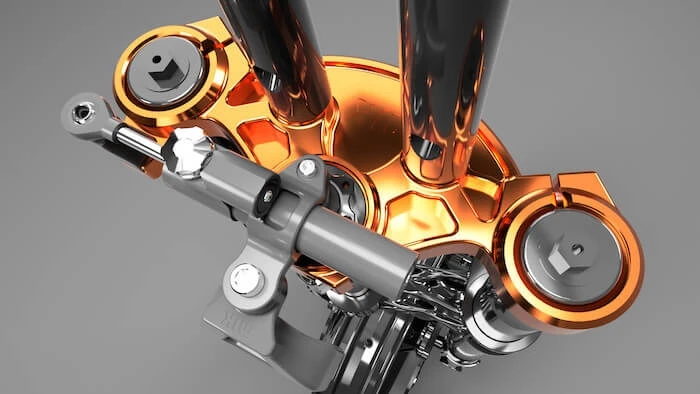& Construction

Integrated BIM tools, including Revit, AutoCAD, and Civil 3D
& Manufacturing

Professional CAD/CAM tools built on Inventor and AutoCAD
Generative design is a technology that rapidly evaluates countless designs against project criteria, then discards suboptimal designs and highlights the best—accelerating the design process.
It's a machine-learning technology that understands input engineering requirements and suggests the best ideas according to those parameters. The system can produce many iterations that meet those criteria by applying constraints for mass, strength, flexibility, or other performance metrics to the generative design algorithm.
Generative design is particularly valuable in design and manufacturing to help ideate or pivot faster and more cost-effectively. It’s also a new way of automating manufacturing for the industry.
Methods and equipment such as casting, injection molds, lathes, and CNC devices are entrenched in manufacturing. To some extent, this has steered the designs for current tools and products due to the physical constraints they present.
Generative design gives manufacturers another tool for exploring product and part design. And it can unlock unrivaled potential and capabilities when combined with other technologies like additive manufacturing, multiaxis machining, and injection molding.
With additive manufacturing, you can prototype products quickly using test materials and perfect a design before transposing it into a live production environment.
When it comes to injection molding or casting, finding a balance of mass and strength is usually paramount to selecting the metals and alloys for final production parts and structures.
Generative design is famous for mimicking organic and skeletal shapes, but it’s not just for show. Those naturally inspired shapes reveal the clever design strategy for maintaining strength in an object while vastly reducing the materials needed. And if you’re manufacturing cast materials like metals on an industrial scale, the cost savings are substantial.
When combined with additive techniques and traditional manufacturing methods, generative design can suggest larger and more complex objects than were previously possible.
Traditional manufacturing often involves assembling multiple parts, which can compromise strength. In contrast, generative design optimizes structures, potentially using less material, and can analyze alternative materials for enhanced performance.
Generative design is cost-effective but also helps you work better, benefitting design and manufacturing in ways that can be obvious or surprising. Using generative design can:
Consider a simple metal or plastic part. Generative design can help design that part using less material as it goes through the CNC manufacturing or casting process, while maintaining structural integrity and strength.
In a world where time is money, prototyping the best design faster by combining generative design and additive manufacturing could mean even more cost savings.
What’s more, when you combine it with the new generation of more intelligent, faster, more responsive manufacturing robots in use today, generative design also offers potential savings during the production stage. Specifically, generative design has had an early impact on optimizing robot end effectors—a device at the end of a robotic arm that interacts with the environment, such as a milling cutter or a paint gun—so robotic cells can carry a more efficient payload.
To think of it another way, instead of just removing the excess, existing material can be reordered or reassembled into a new form—or a different material altogether can be used—to make the same object perform better while retaining its essential shape or size.
Generative design doesn’t replace human designers; it assists them. Like a highly skilled intern, it will make suggestions that can lead designs down new paths, arriving at new ways of doing things across the project.
With generative design, you can blend multiple components into single parts, reducing assembly costs, improving efficiency, and simplifying your supply chain.
Combining generative design with additive manufacturing can reduce waste during production, improve energy efficiency by reducing the workload on manufacturing devices, and result in products that perform better while using fewer (or more sustainable) materials.
Sustainable manufacturing is built into the DNA of generative design technology, promoting concepts like green manufacturing and the circular economy.
Generative design is transforming different manufacturing sectors, with companies introducing it through pilot programs or, in some cases, rebuilding entire business models around it.
The automotive industry presents a perfect storm of opposing design challenges. Cars need to be tough but light, rigid but impact-absorbing, and sustainable despite running on polluting materials.
Because autos are so complex and have countless moving parts, they present a unique opportunity to benefit from generative design.
You wouldn’t imagine a seat-frame design can be changed significantly—they require strength to support an adult human. However, seats have become bigger, heavier, and more complex as newer models add electronic controls, heating, and other features.
Toyota Japan decided to use generative design to make the seat frame thinner to free up more room in the cabin. The result was so positive that it proved to be a roadmap for the company to also rethink other components.
Groundbreaking French industrial and architectural designer Philippe Starck collaborated with Autodesk and Italian household fittings and furniture maker Kartell to create an eye-catching chair, named A.I, using artificial intelligence and generative design.
Starck outlined the aesthetic parameters; software experts established constraints meeting Kartell’s requirements for the injection molding manufacturing process; and the generative design algorithm executed a series of designs that Starck and the team then finessed to bring closer to his vision.
To prevent spinal injuries, engineers and designers at Austrian sports-safety-equipment manufacturer Edera Safety created a specialized brace using generative design that moves with the body in fast-paced, high-impact sporting environments.
The process was complicated by the fact that variables in the movement of the human body are too numerous and the range of operation too complex—and occasionally conflicting. Until a test model was field-tested, it was impossible to know how much force, rotation, or disruption they were dealing with.
It was only by taking the behavior and parameters from prototypes of the brace and feeding it back into generative design algorithms that Edera arrived at the perfect product.
There’s a small class of motorcycle enthusiasts who experiment with and improve the performance of models from some of the most iconic brands in the world. But what they need is usually so customized and serves such a small market that those brands—with their global-level and highly rigid assembly line production processes—can’t possibly accommodate them all.
Enter Canadian shop MJK Performance, a custom motorcycle parts manufacturer that serves a narrow but loyal customer base dedicated to aftermarket Harley-Davidson modifications.
Creating replacement parts to improve performance was more challenging than the MJK team anticipated—until they let generative design work alongside them.
After giving the system the requirements that yielded a range of options, it took less than half an hour to tweak digital models to adhere to the distinctive Harley-Davidson aesthetic.
Generative design is becoming more widespread and more successful because of a lockstep approach.
Machine learning research and training methods are advancing the software. Early adopters are testing the results in real-world applications, producing invaluable data from systems such as the Industrial Internet of Things (IIoT) that’s fed back into the research to expand the power of the technology further.
It’s an example of how automation prompts new disciplines and skills to a new class of jobs rather than replacing manufacturing staff.
In addition to improving generative design, the technology is accelerating Industry 4.0, where designers and engineers will interact with software more than ever.
It will also advance materials science. In one example, fluid dynamics is notoriously hard to model computationally. Yet research labs are feeding data into generative design algorithms that can better simulate fluid behavior, helping engineers and designers create better components that work in liquid or gaseous environments.
One of generative design’s most important impacts is making manufacturing gentler on the planet. A study about the automotive, aerospace, and sporting goods industries found that generative design reduced material mass by up to half.
Generative design will also lessen the barrier to entry for small artisanal manufacturers and encourage innovation, elevating the art and science of manufacturing for the industry as a whole and improving the way things are made.
This article has been updated. It originally published in September 2019. Rosa Trieu and Dan Miles contributed to this article.
After growing up knowing he wanted to change the world, Drew Turney realized it was easier to write about other people changing it instead. He writes about technology, cinema, science, books, and more.
Executive insights
Emerging Tech
PD&M
Image courtesy of SRAM.








